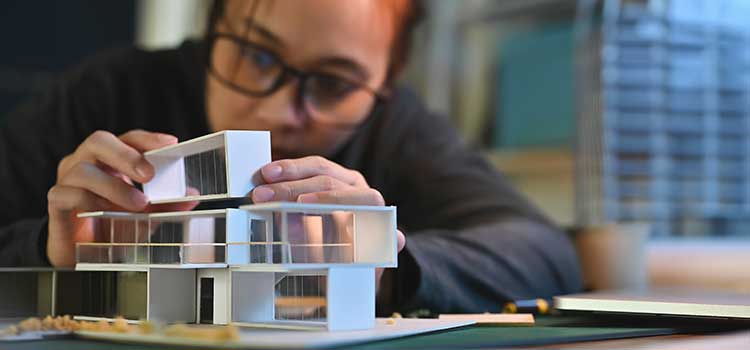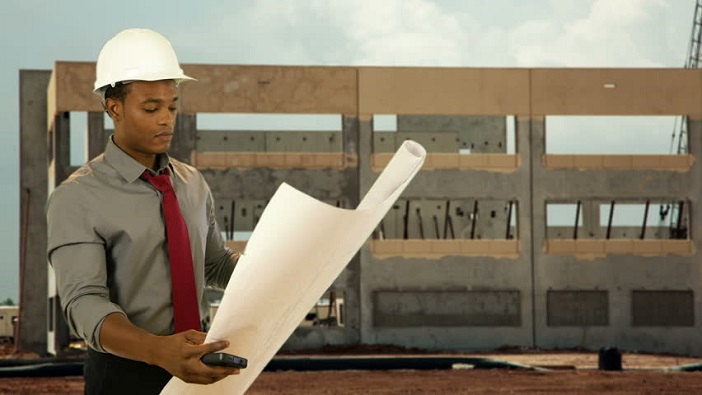Architect Firm Identity Strategies That Get Noticed
Architect Firm Identity Strategies That Get Noticed
Blog Article
Recognizing the Diverse Job Paths Available for Aspiring Architect
As an ambitious Architect, you have a world of job courses waiting for you. Each path provides unique challenges and opportunities to apply your creative thinking and technological know-how. Whether you're attracted to traditional style or the nuances of sustainable layout, there's a specific niche that straightens with your rate of interests. Recognizing these varied alternatives can shape your specialist journey, yet which instructions will you select to discover first?
Typical Style: Creating Structures and buildings
Traditional design focuses on developing structures and structures that mix performance with visual appeal. Your styles can show social heritage, showcasing neighborhood traditions while satisfying modern requirements.
You'll establish abilities in drafting, model-making, and website analysis, allowing you to imagine and interact your concepts successfully. Involving with clients, you'll require to recognize their vision and equate it into viable designs.
Furthermore, developing codes and sustainability methods are important in your work, guaranteeing your frameworks are eco friendly and safe. As you grow in your career, you'll discover possibilities in residential, commercial, or even reconstruction projects, each offering distinct challenges. Accepting standard architecture paves the means for a fulfilling career that pays tribute to the past while shaping the future.
Urban Preparation: Shaping Neighborhoods and Public Spaces
As a hopeful Architect, you can play a vital role as a metropolitan coordinator, transforming exactly how neighborhoods interact and operate. By employing neighborhood involvement strategies, you'll ensure that residents have a voice fit their atmosphere. And also, incorporating lasting layout concepts will certainly aid develop rooms that not just fulfill today's needs but likewise shield the future.
Function of Urban Planners
While lots of may believe of engineers as the sole visionaries behind structures, metropolitan organizers play an essential role in shaping the wider landscape of communities and public rooms. By collaborating with numerous stakeholders, you'll help create parks, transportation systems, and residential locations that promote social interaction and accessibility. Your knowledge in spatial design and area dynamics permits you to imagine future development while maintaining cultural heritage.
Area Engagement Techniques
Effective area interaction techniques are vital for metropolitan organizers to assure that the voices of locals are heard and valued in the preparation process. To cultivate significant discussion, you must focus on open online forums and workshops where neighborhood members can share their concepts and worries. By actively including and paying attention comments, you'll create areas that mirror the neighborhood's demands, ultimately leading to more sustainable and successful city atmospheres.
Sustainable Design Concepts
When designing urban rooms, integrating sustainable style concepts is vital for creating environments that flourish both ecologically and socially. Think about incorporating green spaces, like parks and yards, to boost biodiversity and improve air quality.
Creating with water preservation in mind is also vital-- assume about rainfall yards and permeable surface areas to manage stormwater. Involving area members throughout the preparation procedure warranties that the areas you create satisfy their needs and urge social communication. By welcoming these concepts, you'll add to vivid, sustainable urban landscapes that profit everyone.

Landscape Design: Creating Lasting Exterior Atmospheres
As you explore landscape architecture, you'll find essential layout concepts that produce practical and attractive outside spaces. Lasting techniques play an essential duty in ensuring these settings grow while lessening ecological impact. And also, you'll find a variety of occupation possibilities that allow you to make a real distinction in how individuals engage with nature.
Design Concepts in Landscape
Comprehending style principles in landscape style is vital for creating lasting exterior settings that harmonize with nature. You'll need to consider elements like percentage, equilibrium, and scale to guarantee your designs really feel cohesive and inviting. Including native plants not only improves biodiversity yet additionally minimizes water use, making your landscape resilient. Consider the flow of space and exactly how individuals engage with it; pathways and seating locations must welcome exploration and leisure. In addition, take note of seasonal modifications, developing with products that match the surroundings year-round (Architect). By prioritizing sustainability and aesthetic appeals, you can develop outside spaces that enhance the community and advertise well-being. Embracing these concepts will set a solid structure for your career in landscape style.
Sustainable Practices Introduction
Sustainable practices in landscape design not only concentrate on aesthetics yet also prioritize environmental health and source conservation. You can create spaces that advertise dirt health, such as practicing and making use of natural materials permaculture concepts. Inevitably, these practices ensure your layouts profit both individuals and the atmosphere for years to come.
Job Opportunities Expedition
With a strong foundation in lasting methods, landscape design provides a variety of occupation paths that allow you to make a significant impact on the environment. Urban coordinators typically team up with landscape architects to develop eco-friendly areas in city setups, enhancing city livability. If you're passionate regarding education and learning, consider coming to be a landscape design basics teacher, motivating future generations.
Lasting Style: Focusing on Eco-Friendly Practices
As you discover your profession in style, embracing eco-friendly practices can set you apart in a competitive area. Sustainable design concentrates on developing structures that reduce environmental effect while improving resident health. By incorporating sustainable materials, energy-efficient systems, and sustainable structure techniques, you'll add to a greener future.
Begin by getting knowledge of environment-friendly certifications like LEED or BREEAM, which can boost your qualifications. Consider just how natural light, air flow, and thermal effectiveness can maximize style. Collaborate with engineers and ecological specialists to introduce services that decrease waste and preserve sources.
Don't fail to remember the significance of neighborhood participation-- engaging regional stakeholders can motivate layouts that balance with the environment. As clients significantly focus on sustainability, your expertise in environmentally friendly practices will not just attract tasks but also satisfy your passion for accountable architecture. Welcome this critical facet of the occupation, and see your occupation grow.
Historical Preservation: Protecting and Bring Back Social Heritage
While you start on your architectural journey, take into consideration the important role of historic preservation in keeping our social heritage. This area focuses on the defense and remediation of significant buildings, websites, and structures that inform the tales of our past. By participating in historic preservation, you'll aid protect the building heritage that shapes neighborhood identification.
As a historic conservation Architect, you'll assess historical value and evaluate the condition of structures. You'll work closely with conservationists and historians to assure genuine remediation methods are used. This profession path allows you to blend imagination with research study, enabling you to develop solutions that respect initial products and craftsmanship.
Your work not just contributes to sustainability by reusing existing structures yet also promotes a feeling of pride within areas. Accepting this course will help you come to be a guardian of history, protecting the tales and appearances that improve our lives.
Interior Design: Enhancing Indoor Spaces
Historical preservation and indoor architecture both share a commitment to boosting the constructed environment, yet they concentrate on different aspects. While historical conservation emphasizes preserving a structure's social and historic worth, indoor style nos in on maximizing interior areas for capability and appearances.
As a hopeful Architect, you'll locate that indoor design allows you to mix creative thinking with technical abilities. You'll develop areas that not just look excellent yet additionally advertise convenience and effectiveness. This field includes recognizing how light, shade, and products connect within an area, affecting state of mind and usability.
You'll work with different projects, from domestic homes to business offices, making certain that each atmosphere meets the demands of its passengers. By focusing on individual experience, you can change insides into practical and motivating areas, making a significant influence on exactly how people connect with their surroundings. Welcome the opportunity to boost interior environments and form the method individuals function and live.
Industrial Design: Merging Performance With Looks
Industrial design plays a vital function in developing items that perfectly mix aesthetic appeals with functionality, ensuring that what you make use of day-to-day is not only aesthetically enticing however additionally practical. As an ambitious Architect, you could engage on your own in this field, concentrating on creating everything from furnishings to customer electronics. click to find out more Your work involves understanding user demands, materials, and making procedures, permitting you to produce innovative remedies that boost everyday experiences.
In commercial layout, you'll typically team up with marketing experts, suppliers, and designers, ensuring that your designs are not just beautiful but additionally practical. This job course provides a dynamic environment where creativity meets functionality, making it a gratifying selection for engineers interested in shaping the products of tomorrow.
Regularly Asked Concerns
What Educational Credentials Do I Required to Come To Be a Designer?
To become an engineer, you'll require a professional level in design, usually a Bachelor's or Master's. Additionally, you'll need to complete a teaching fellowship and pass the Architect Registration Assessment to practice legitimately.
Are There Certification Demands for Different Architectural Occupation Paths?
Yes, there're certification needs for various building courses. Architect. You'll require to pass examinations, total teaching fellowships, and often go after specialized training, relying on your selected emphasis, like landscape architecture, city design, or historic conservation
What Software Abilities Are Vital for Engineers Today?

Just How Can I Gain Practical Experience While Researching Architecture?
You can acquire sensible experience by look at these guys interning at building firms, joining design competitions, offering for area projects, or teaming up with classmates on real-world jobs. These chances boost your skills and construct beneficial connections in the industry.
What Work Opportunities Exist Outdoors Standard Style Firms?
You can explore numerous job possibilities outside typical design firms, like city preparation, interior decoration, landscape architecture, construction monitoring, realty advancement, or even duties in sustainability consulting. Each offers unique challenges and incentives.
Whether you're drawn to standard style or the nuances of lasting design, there's a niche that lines up with your interests.When developing city spaces, integrating lasting design principles is crucial for producing environments that grow both environmentally and socially.As you explore landscape architecture, you'll discover necessary layout principles that develop gorgeous and practical exterior rooms.Recognizing layout concepts in landscape style is crucial for creating lasting exterior environments that harmonize with nature.In industrial style, you'll commonly work together with designers, marketing professionals, and suppliers, ensuring that your layouts are not only stunning however additionally feasible.
Report this page